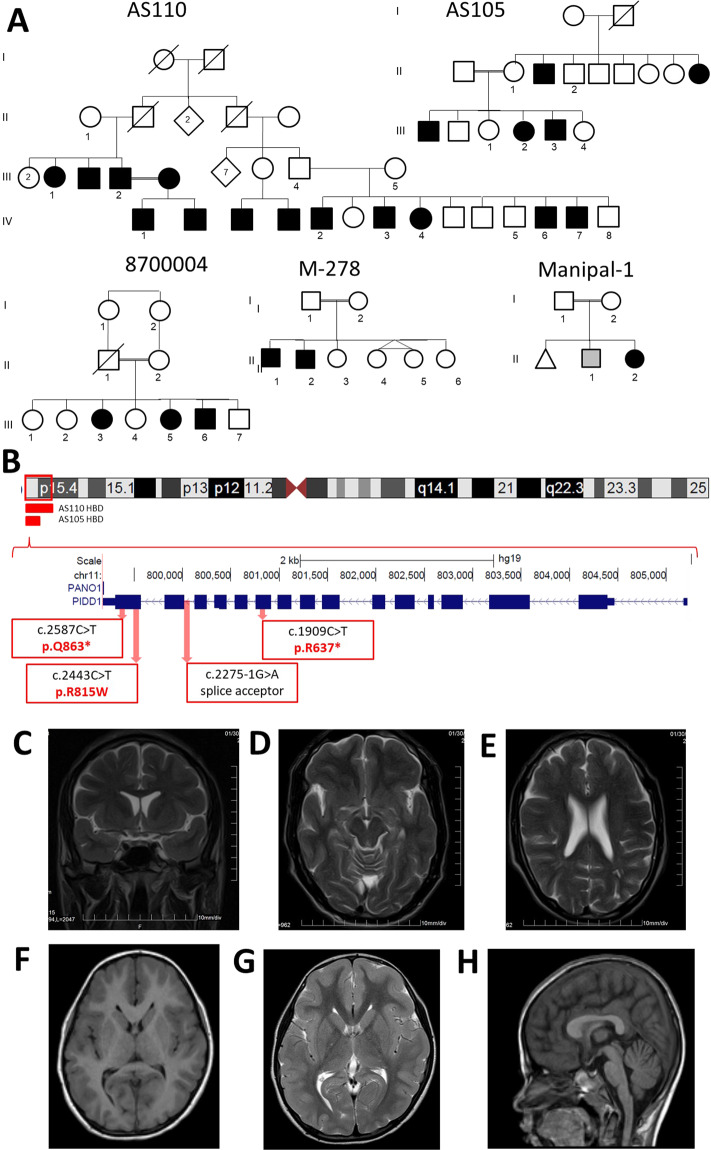Fig. 1. PIDD1 mutation families.
A Pedigrees of five families with PIDD1 mutations. Pakistani families AS105 and AS110 were reported in Harripaul et al. (2018). Iranian families 8700004 and M278 have also been reported in Hu et al (2019). Indian family Manipal-1 has not been reported previously. B Location and overlap of HBD regions, and locations of the identified mutations relative to the exonic structure of PIDD1. The known PIDD1 protein cleavage products, N-PIDD1, C-PIDD1, and CC-PIDD1 are shown, as reported by Tinel et al. (2007). MRI images for AS110 IV-3. C Coronal T2 sequence shows subtle smooth gyration and shallow sulcation affecting the frontal and temporal lobes, compatible with lissencephaly. D Axial T2 sequence shows subtle smooth gyration and shallow sulcation affecting the frontal and temporal lobes, compatible with lissencephaly. E Axial T2 sequence shows subtle smooth gyration and shallow sulcation affecting the frontal lobes, compatible with lissencephaly. MRI of the Manipal-1 proband (II-3) showing pachygyria in F T1 axial, G T2 axial, and H sagittal section showing mildly dysmorphic (short and thick) corpus callosum.

